

Aralia Variegated Plant - (Polyscias Fruticosa)
Native to the tropics of India and Polynesia, Aralia is an interesting and exotic houseplant that is technically an evergreen shrub. While it is a bit more temperamental to grow than your average plant, it’s well worth the effort for its fluffy, bright green foliage. Its ferny, feathery leaves droop from graceful narrow branches that grow straight up, forming a many-layered, complex plant. If you’re seasoned at taking care of a variety of houseplants, you should have no problem caring for Aralia.


Light & Temperature
Aralia likes bright, indirect light and can handle light shade. Allowing the plant to get morning sun is good, but it should never be kept in direct sunlight during the harsher afternoon hours, as the rays can scorch its fragile foliage. Aim for about six to 8 hours of filtered light a day; it's said Aralia do especially well in North-facing light. Aralia can happily handle warmer temperatures (it does beside between 65 and 85 degrees Fahrenheit), but anything below 60 degrees will cause your plant to fail and shed its foliage.
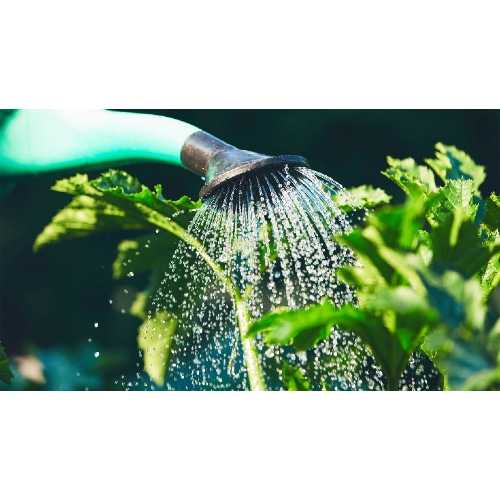

Watering
It's important to keep your Aralia plants consistently moist but never saturated. Water the soil deeply and allow it to almost dry out before you water it again—a weekly session should do the trick. Additionally, you can decrease your watering cadence in the winter, watering your plant every other week instead. When planting indoors, place your container or pot on a tray filled with wet pebbles to increase humidity levels. You can also mist the foliage of the plant periodically to mimic the humid, wet conditions of the tropics.
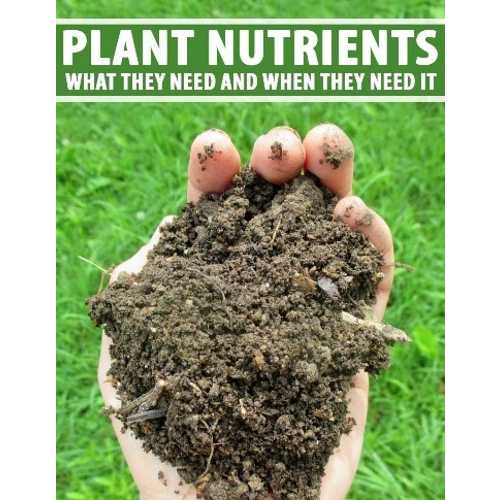

Soil & Fertilization
Aralia plant prefers a rich but well-drained soil mixture to help balance its need for moisture with its fragile, rot-prone roots. While the specific blend of soil can vary (from sandy to peat moss to loamy), drainage should be the priority. Feed your Aralia with a liquid fertilizer monthly throughout its growing period (spring through fall). If you notice falling leaves or those that are yellowish-green in appearance, that's a good indication that your plant isn't getting enough nutrients and could benefit from a bit of fertilizer.
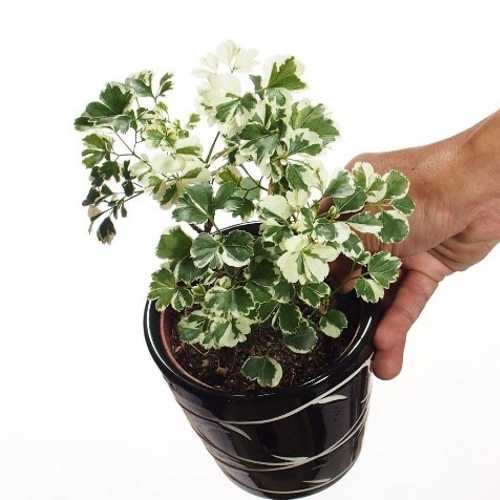

Repotting Aralia Variegated Plant
Repot annually as needed, or every other year. A mature Aralia can reach six feet or higher in optimal conditions, so repot it less often if you want to keep the plant smaller. They don’t object to being slightly pot-bound, but you should refresh or top dress the soil annually. Aralias can be planted in a variety of soil types as long as it gets good drainage. These plants perform best in soil that is not too wet or too dry. Balance is key!
Propagation of Aralia Plants
Aralia plants can be propagated through cuttings. All you need to do is to take a green-stem cutting and to place it in damp soil. For the best results, we recommend using a rooting hormone powder. Prepare the cuttings you want to propagate in spring. Next, keep them in moist soil and plenty of warmth, about 75°F (23°C), and humidity. Once the root system of the new plant develops, you can start to use fertilizer.
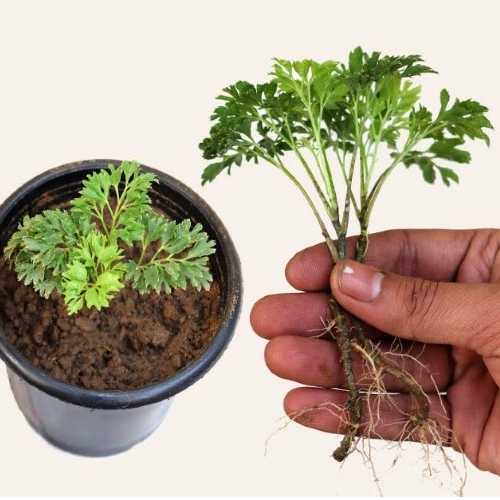

Plant Care Tips
- Pruning: Aralia reaches a maximum height of about eight feet tall and has a spread of two or three feet. Unless you have unlimited space, it’s a good idea to keep indoor plants’ size under control with regular pruning of the branch tips.
- Mealybugs or scale may hide under stems and leaves. To remove the pests, use a spray bottle of water or wipe the insects off gently with a bit of rubbing alcohol on a paper towel or cotton swab. Repeated applications will be necessary to remove the pests’ offspring. If the plant is too heavily infested, it may be better to take a clean cutting from it and start anew.
- Root rot is caused by excessive moisture in the soil. Let the soil dry out between waterings.
- Brown leaves: If the leaves and stems start turning brown, it could be that the plant is receiving too little light and could be having watering issues. You can fix this by addressing the watering concerns and looking into the lighting.
- All-over yellowing: Anytime you see the leaves turning yellow, take it as an indication that your watering schedule needs some amends. You could be overwatering the plant or could have planted it in a soil mix that is not well-draining.
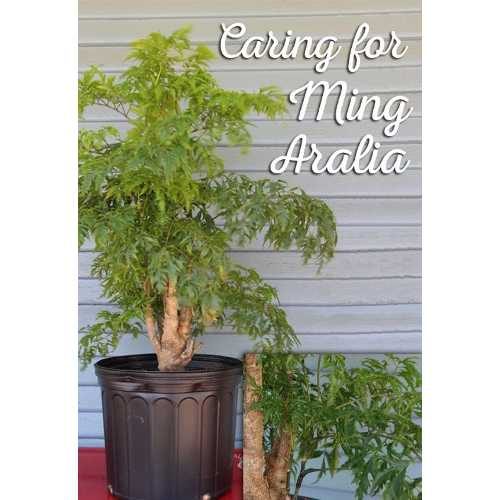



Our Favourable Aspects
- Self-Watering Pot: Excess water gets stored in the reservoir below, the roots then absorb water via capillary action and the plants get water as and when required. It allows you to water less frequently making the plant easy to care for.
- Potting Mixture: It’s a mixture of appropriate amounts of soil, cocopeat & organic vermicompost. Provides best environment to the plant’s roots. It also contains slow-release Fertilizer which gives nutrients to the plants every time it is watered for 6 months.
- Packaging: Plant is secured in a good quality cardboard packaging. Inner Box holds the potted plant in place so that any movement during transit does not affect the plant. Outer box has slits which allow the plant to breathe freely during transit.



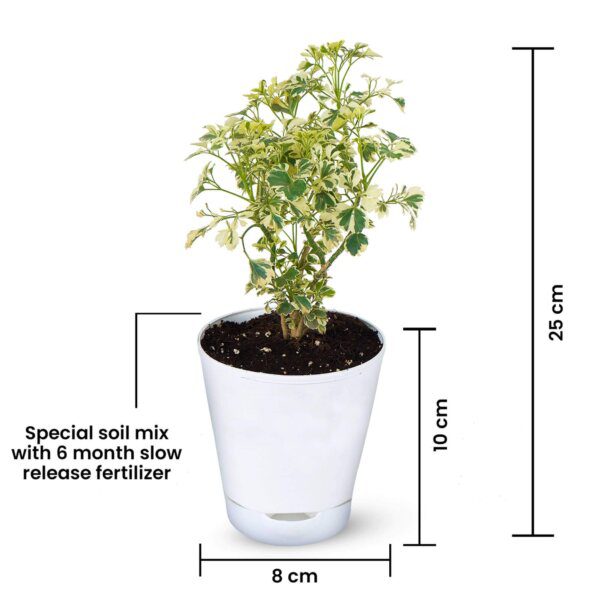


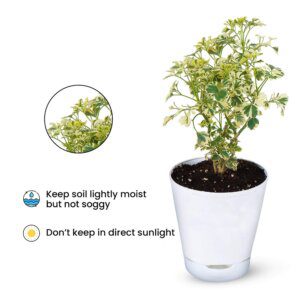


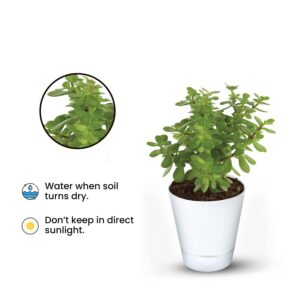
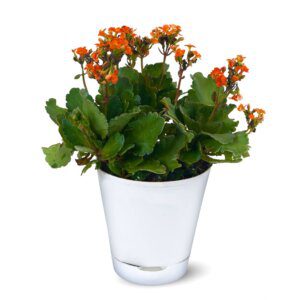
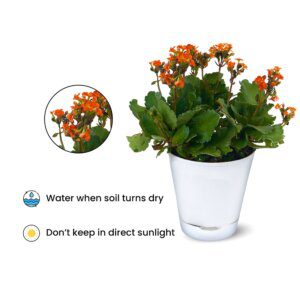
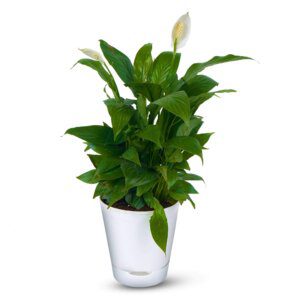
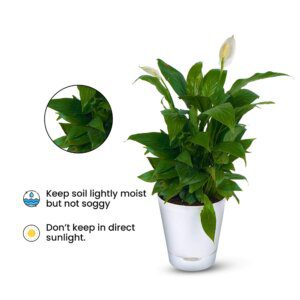
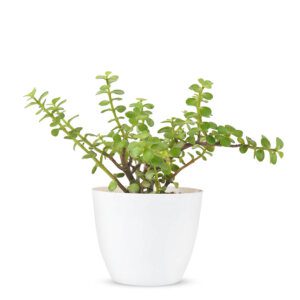

Reviews
There are no reviews yet.